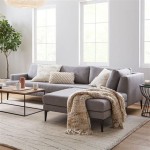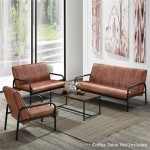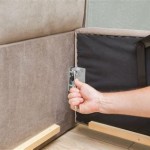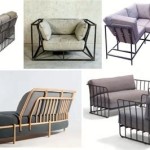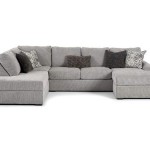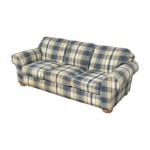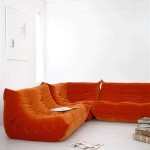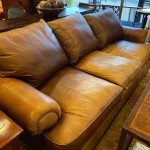Sofa Height Considerations for Dining Table Integration
The integration of a sofa or banquette seating into a dining space offers a blend of comfort and informality, creating a multi-functional area suitable for both dining and relaxed gatherings. However, achieving the desired aesthetic and ergonomic balance requires careful consideration of sofa height in relation to the dining table. An improperly matched height can lead to discomfort, hinder proper posture, and compromise the overall dining experience. This article explores the fundamental principles governing sofa height selection for dining tables, providing practical guidelines for achieving an optimal setup.
Traditional dining sets adhere to a standardized height relationship between the chairs and the table. Dining chairs typically have a seat height of approximately 18 inches, paired with tables that are generally 28 to 30 inches tall. This configuration allows for adequate legroom beneath the table and promotes comfortable arm placement for dining. When replacing traditional dining chairs with a sofa or banquette, these established dimensions serve as a valuable point of reference, although adjustments are often necessary to accommodate the unique characteristics of upholstered seating.
Understanding the Key Dimensions
Successfully integrating a sofa into a dining setting requires paying close attention to three primary dimensions: the sofa seat height, the table height, and the clearance space between the seat and the underside of the table. The sofa seat height, measured from the floor to the top of the seat cushion, is the most critical factor. This dimension directly influences posture and determines how comfortably a person can reach the table.
The table height, as previously noted, typically falls between 28 and 30 inches. However, variations exist depending on the table's design and style. It is crucial to accurately measure the table height to ensure compatibility with the chosen sofa. Neglecting this measurement can lead to an uncomfortable dining experience, requiring diners to overreach or hunch over the table.
The clearance space, or the distance between the top of the sofa seat and the underside of the table, is the final critical dimension. This clearance determines the amount of legroom available and directly impacts the comfort level. Insufficient clearance can result in cramped legs and an awkward posture, while excessive clearance can make it difficult to reach the table comfortably.
Determining Optimal Seat Height
The ideal sofa seat height for a dining table is generally lower than that of a standard dining chair, although this is not always the case. The primary reason for this adjustment is the inherent compression of sofa cushions. Unlike the firm, unyielding surface of a dining chair, sofa cushions compress under weight. This compression effectively reduces the seat height when someone is seated. Therefore, a sofa with a static seat height that appears similar to a dining chair might actually be too high when occupied.
A general rule of thumb is to aim for a clearance of approximately 10 to 12 inches between the compressed sofa seat height and the underside of the table. To determine the compressed seat height, it is advised to physically sit on the sofa and measure the distance from the floor to the top of the compressed cushion. This practical approach provides a more accurate representation of the usable seat height.
For instance, if a dining table is 30 inches high, the compressed sofa seat height should ideally be between 18 and 20 inches to achieve the recommended clearance. This allows for comfortable legroom and promotes a natural dining posture. It is important to note that these are general guidelines, and individual preferences may vary. Factors such as body type and preferred dining posture should be taken into consideration.
Sofas with a lower profile and firmer cushions are generally better suited for dining purposes. Sofas with deep, plush cushions tend to sink too much, making it difficult to maintain proper posture while dining. The frame and suspension system of the sofa also contribute to the compression factor. A well-constructed sofa with a robust frame will exhibit less compression than a poorly constructed one.
In cases where an existing sofa is being repurposed for dining use, and the seat height is not ideal, there are a few potential solutions. One option is to modify the table height by adding extensions to the legs. This is generally easier to achieve with wooden tables. However, it is crucial to ensure that the extensions are structurally sound and aesthetically consistent with the table's design.
Another option is to use cushions or pillows to raise the seating position slightly. This can be a cost-effective solution, particularly for banquette seating. However, it is important to select cushions that are firm and supportive to avoid creating an unstable seating surface. The cushions should also be securely fastened to prevent them from sliding during use.
Considering Armrests and Back Support
Beyond seat height, the design of the sofa's armrests and back support plays a significant role in the overall dining experience. Sofas with high, bulky armrests can restrict movement and make it difficult to pull up close to the table. Armrests that are too low, on the other hand, offer little support for elbows or forearms while dining.
Ideally, the armrests should be at a height that allows for comfortable arm placement without interfering with access to the table. Some sofas feature armrests that slope downwards towards the front, providing a more accommodating profile for dining. Armless sofas or banquettes eliminate this concern altogether, offering unrestricted access to the table.
Back support is equally important for maintaining proper posture and preventing discomfort during extended dining sessions. Sofas with insufficient back support can lead to slouching, which can strain the back and neck muscles. The sofa's back should provide adequate lumbar support to maintain the natural curvature of the spine.
The depth of the sofa is also a consideration. A sofa that is too deep can force diners to sit too far back from the table, making it difficult to reach food and drinks. A shallower sofa, with a seat depth of approximately 20 to 24 inches, is generally better suited for dining purposes. This allows for a more upright posture and facilitates comfortable interaction with the table.
Material Selection and Durability
The choice of upholstery material is another important factor to consider when selecting a sofa for dining use. The material should be durable, stain-resistant, and easy to clean. Dining areas are prone to spills and food stains, so choosing a fabric that can withstand regular cleaning is essential.
Leather is a durable and stain-resistant option, although it can be more expensive than other materials. Synthetic fabrics, such as microfiber and performance fabrics, are also good choices. These materials are typically stain-resistant, easy to clean, and relatively affordable. Avoid delicate fabrics, such as silk or velvet, which are prone to damage and difficult to clean.
The sofa's frame construction is equally important for ensuring its durability and longevity. A solid hardwood frame is the best option, as it provides superior strength and stability. Avoid sofas with frames made from particleboard or MDF, as these materials are less durable and prone to warping.
The suspension system of the sofa also contributes to its overall comfort and durability. A well-constructed suspension system will provide adequate support and prevent the cushions from sagging over time. Eight-way hand-tied springs are considered the gold standard for sofa suspension, although other options, such as sinuous springs and webbing, can also provide adequate support.
When incorporating a sofa into a dining space, lighting considerations should also be addressed. Overhead lighting should be positioned to illuminate the table without creating glare or shadows. Task lighting, such as table lamps or pendant lights, can provide additional illumination for specific tasks, such as reading or working at the table.
The overall aesthetic of the sofa should complement the style of the dining table and the surrounding décor. Choose a sofa that is proportionate to the size of the room and that harmonizes with the other furniture and accessories. Consider the color, texture, and pattern of the sofa's upholstery when making your selection.
Integrating a sofa into a dining area can create a stylish and versatile space. By carefully considering the dimensions, materials, and design elements, it is possible to achieve a comfortable and functional dining setup that combines the best of both worlds.
Optimal Sizes For The Dining Room Kitchen Furniture Urban Quarter

Height Of A Sofa Table Ashley Furniture Home Office Check More At Http Www Nikkitsfun Com

Right Fit For Dinner A Table And Chair Sizing Guide Timber To

Dining Table Set For 4 Multipurpose Home Kitchen Bar With 3 Upholstered Stools Chairs Piece Sets Living Room Sofa Walnut Com

Counter Height Dining Sets Pros And Cons Furniture Showcase

Standard Dining Table Dimensions The Size Guide

Furniture Of America Greensburg 39 In Rectangle White And Light Gray Wood Nested Counter Height Dining Table Idf 3544lg Pt The Home Depot

Standard Dining Table Dimensions The Size Guide

Hand Made Live Edge Sofa Table With Seating Behind Couch Metal Legs Home Bar Height By Brick Mill Craft Furniture Custommade Com

Costway 42 In Round Black Wood Counter Height Dining Table With 2 Tier Storage Shelf Seats 4 Kc53575es The Home Depot

